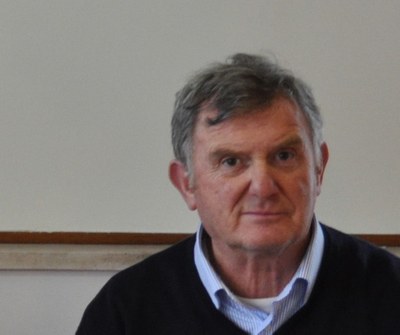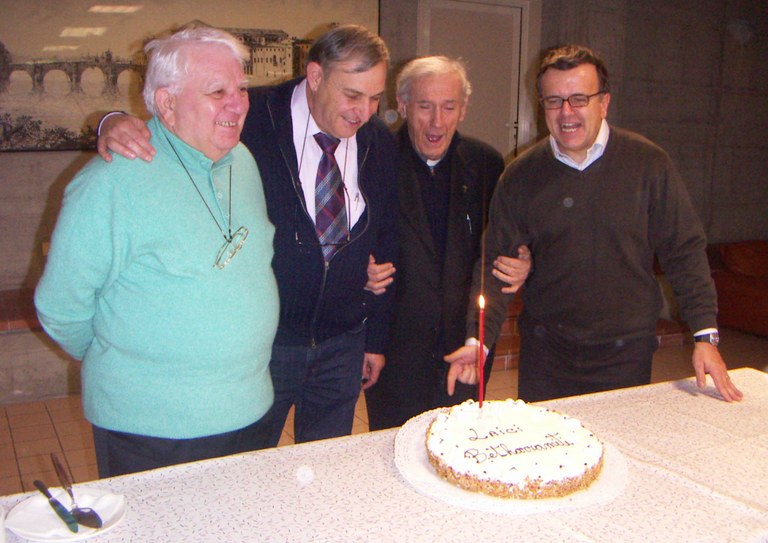The eleven vicariates of the congregation (6)
The Vicariate of Italy
Its roots
The presence of the religious order of Betharram was born in Italy in the context of the expulsion of religious orders from France in 1903. It was the fruit of divine providence according to Father Marque, one of the founders of the community in Valtellina. The congregation was committed in two directions: even before the expulsion, there was the need for a residence in Rome which would be the office for the procurator general for business matters with the Holy See; running in parallel, following the expulsion, there was the suggestion of opening a community in the diocese of Côme in the far north of the peninsula. This was how the two main communities of the Italian Betharram order were founded: the residence of the church of the Holy Guardian Angels in the centre of the eternal city and the missionary community of Traona in Valtellina, which was also given the responsibility of welcoming young Italians destined for the religious life in the Betharram congregation for the start of their formation.
These two communities, Rome (inaugurated in January 1905) and Traona (opened in August 1904) no longer exist today, but they are the bedrock of the Italian vicariate which developed in these two regions, the north and the centre of Italy. The community at Traona closed in 1911, but the close links which were forged with the priests in the area allowed other young people with a calling to the Betharram order to be sent to the Betharram college; some of them were asked to return to Italy in 1928 to found what was to become the the mother community of the vicariate, the apostolic school of Colico which then became a college. The residence of the Holy Guardian Angels was closed in 1914, but a Betharramite presence remained in the church of Our Lady of Miracles on the piazza del Popolo. In the 20s, Father Jules Saubat, procurator general, acquired the residence of Monte Porzio Catone, 25 km to the south east of Rome, which then became one of the principal communities of the vicariate.
With the division of the congregation into provinces, determined by the General Chapter of 1947,the Italian vice-province was established and Father Alessandro Del Grande was the first superior. The event was followed by a flourishing of vocations and charities, which led the major superiors to establish the Italian province in 1958. The houses of formation were soon set up, at Albiate for scholastics, at Albavilla for junior seminarians, at Monte Porzio for novices, the parish residence at Lissone (1953), founded by Father Giuseppe Airoldi, the college at Gravedona, in use from 1957 to 1966, the sanctuary of Our Lady of Caravina, on the Lugano lake (1960-2003), the parish community of Santa Rosa in the suburbs of Rome (1962-2006), the communities of Montemurlo and Ponte a Elsa in Tuscany at the end of the 70s, the Piedmontese residence of Premosello and Sala Babanza, and several other communities...
From the 80s, the Italian province opened a mission ad gentes with the foundation of the parish of Niem in the north west of the Central African Republic and at the same time relationships with the Italian missionaries in Thailand became ever closer. As a consequence the province courageously chose to share life with the poorest and most excluded in society, a choice which became a reality in 1992 with the opening of a reception centre to welcome people suffering with AIDS in Monte Porzio Catone.
The crisis in vocations particularly touched the province from the 90s, and the natural ageing of the relgious community has necessarily led in recent years to a reassigning of tasks, without in any way diminishing the vitality of the province, notably thanks to a sharing of the charism of St Michel with the laity, who today collaborate actively with the religious of the vicariate to carry forward the common mission of the church.
Roberto Cornara
Its Present and future with Fr Aldo Nespoli scj, regional vicar

The communities of the Italian vicariate are 10 in number and are composed of 46 religious. They comprise:
Community of Monteporzio: with 6 religious. The community is fully engaged in the care of AIDS patients (about ten people). It also offers a service to the parish of Monte Porzio and animates two other parishes in the Diocese of Tivoli.
Community of Rome – Our Lady ot the Miracles: three religious animate the Shrine and welcome the youth groups and the FSC (Association of Separated & Divorced Christians) working closely with the Fathers of the Generalate.
Community of Albiate: it is the centre of the Vicariate. It is composed of seven religious ministering in various ways: assistance to parishes and chaplaincy to female religious institutes; then, two religious conduct their ministry in the Patient Support team in two Care Homes.
Community of Albavilla: it is the centre of missionary animation. In the Community live 7 religious engaged in various pastoral activities: helping parishes, ministry in Houses of Welcome for the elderly or disabled and chaplaincy to religious institutes.
Community of Colico-Bormio: 4 religious are present who exercise their ministry again in various sectors: in the Care Home for the elderly; in a hospital; in a small parish where they work as parochial priests.
Parish communities are numerous: Ponte a Elsa, Montemurlo, Parma, Milano-Castellazzo and Lissone. Most religious of the Vicariate, (about half) are engaged in pastoral work in parishes. These communities share all the aspects that characterize ordinary pastoral life, while integrating in pastoral programme of the diocese in which they are located.
We feel in Italy a certain fatigue due to lack of vocations and the advancing age of our religious. It makes us think about our future.

The laity collaborates actively with the religious
Meetings of our Religious held in the Vicariate, highlighted three issues:
Personal dimension: How do you feel today in your life, in your community, in your ministry?
Most religious feel good where they are, even if they experience the inevitable difficulty of combining pastoral life with religious life.
Relevance of our presence: Do you think that our presence is meaningful to the local church?
Here, the responses varied depending on religious’ commitments. Some argue that we are considered a bit like “gap-fillers”; others think that we are not prepared to meet the challenges of the local churches. Some bishops consider us more useful for what we do than what we are.
A large number of religious see our presence as strong not because of prestige or power, but by the simplicity with which we integrate into the pastoral life, and the ways in which we connect with people.
The witness of community life also greatly affects the impact we can have, because it presents an image of the Church which is far from the institutional image. People appreciate us when we serve a Church lacking in priests and we are present where others do not want to go (a mobile camp).
The relevance of our presence is measured by our capacity to know to respond to the needs of people today. In other words, a community makes sense when it is able to adapt to the needs of our time, while maintaining what makes for the specificity of our religious identity.
What can we do?
Many insist on the need to give more depth to what characterizes us, give more importance to our times of sharing, and a strong spiritual life that is source of light for people.
We should we be what we are, and we should share our Betharramite spirit not only by words but also in deeds!
Document Actions








